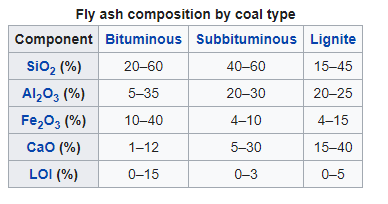Context
The Indonesian government has declared coal ash is no longer a hazardous waste product, despite containing heavy metals such as mercury, lead, and arsenic, in a nod to industry efforts for greater deregulation.
About Fly ash
- Fly ashor flue ashis a coal combustion product that is composed of particulates (fine particles of burned fuel) that are driven out of coal-fired boilers together with the flue gases.
- Ash that falls to the bottom of the boiler's combustion chamber (commonly called a firebox) is called bottom ash.
- Elements present: Fly ash includes substantial amounts of silicon dioxide (SiO2), aluminum oxide (Al2O3), and calcium oxide (CaO).
- The minor constituents of fly ash are:

- arsenic, beryllium, boron, cadmium, chromium, hexavalent chromium, cobalt, lead, manganese, mercury, molybdenum, selenium, strontium, thallium, and vanadium, along with very small concentrations of dioxins and PAH compounds.
Fly Ash Utilisation Policy in India
- The policy will create new employment opportunities in the power plant areas and also make available raw material for construction at low cost to help ‘Housing for All’ projects.
- The policy seeks 100% use of fly ash generated from thermal power plants and biogas plants for construction activities.
- The policy extends the use of fly ash to a 300 km radius of a power plant from an earlier 100 km radius of the power plant.
- It will help in environmental protection and save soil excavation.
- Maharashtra has become the first state to adopt Fly Ash Utilization Policy, paving way for prosperity by generating “wealth from waste”, and environmental protection.
|
